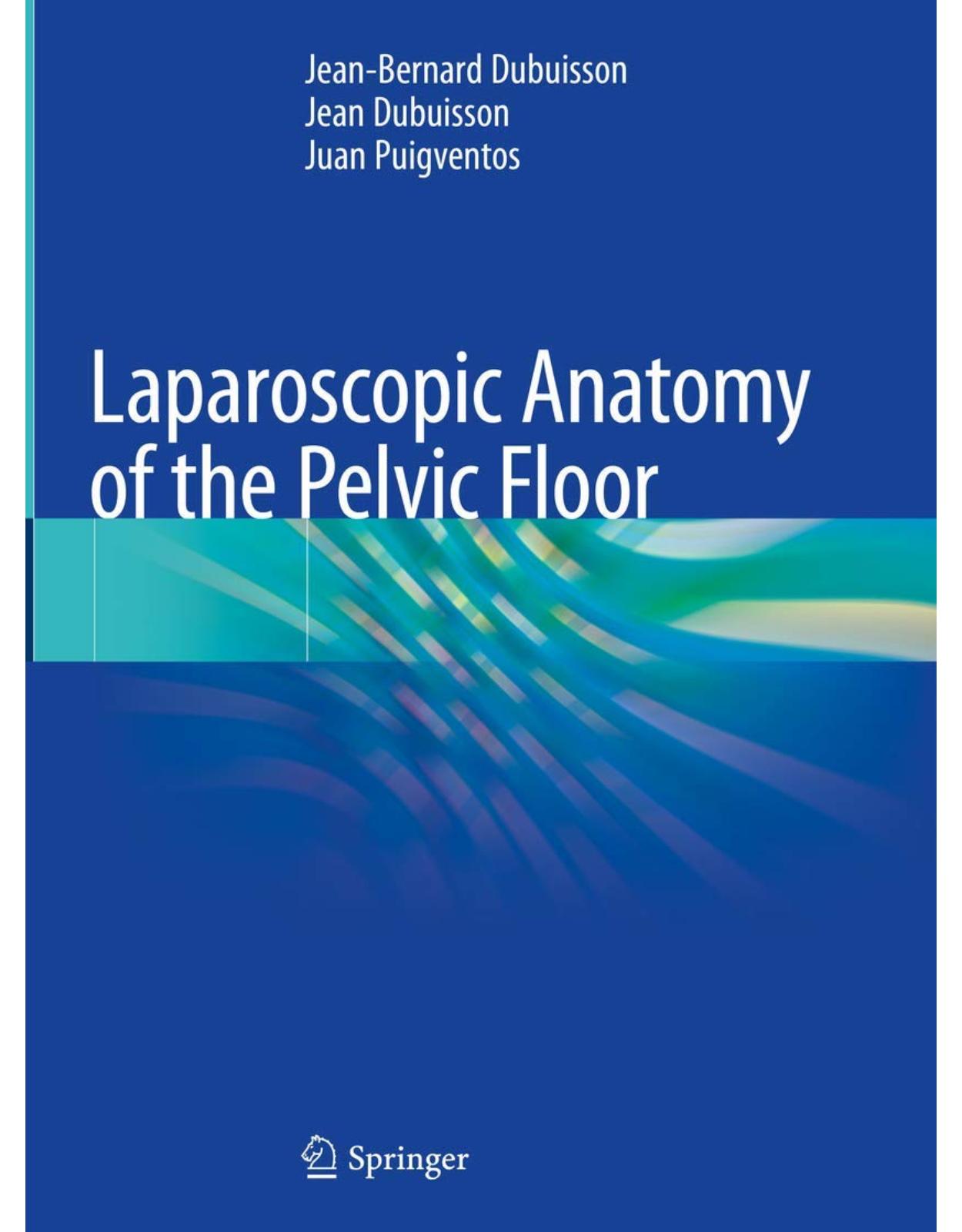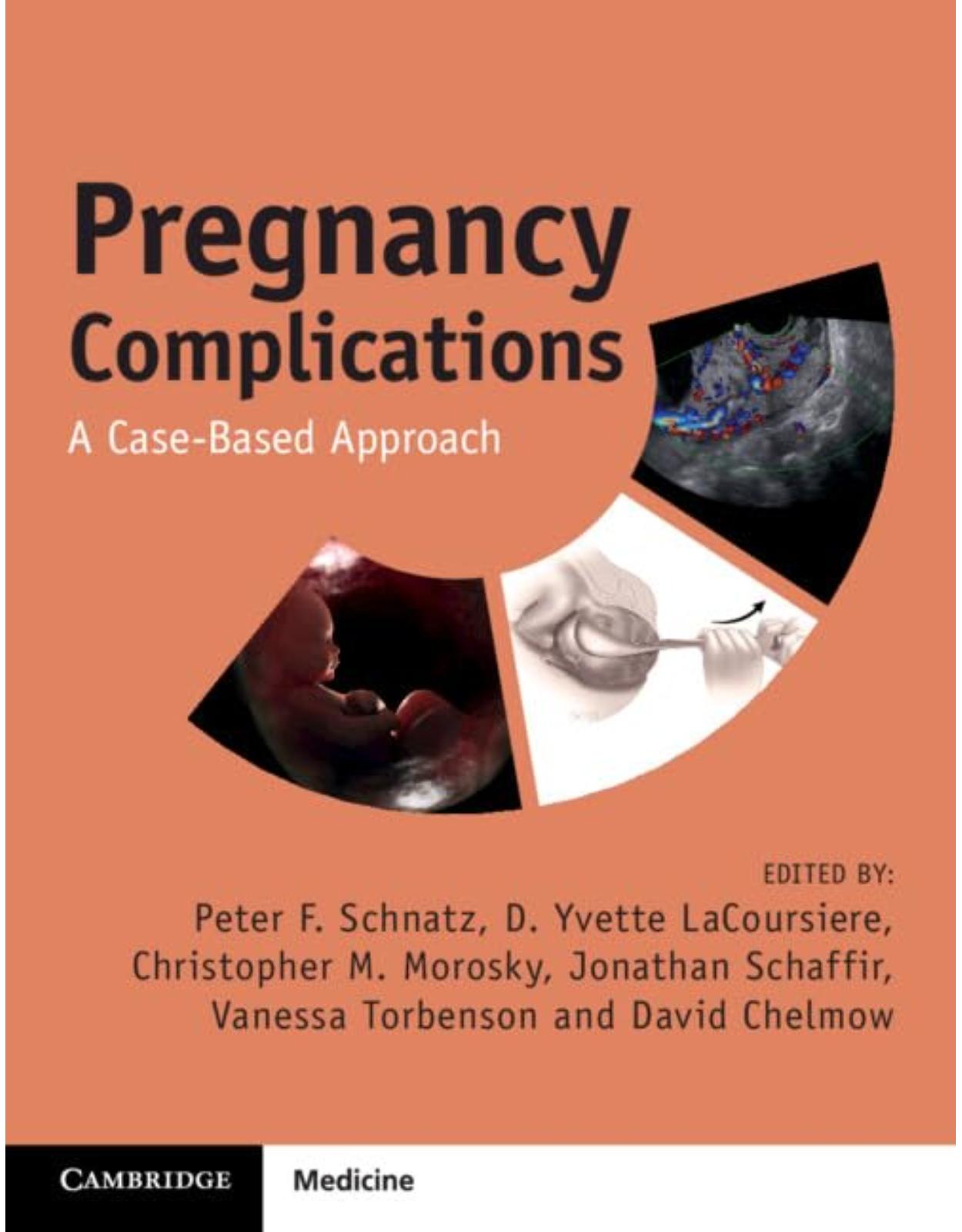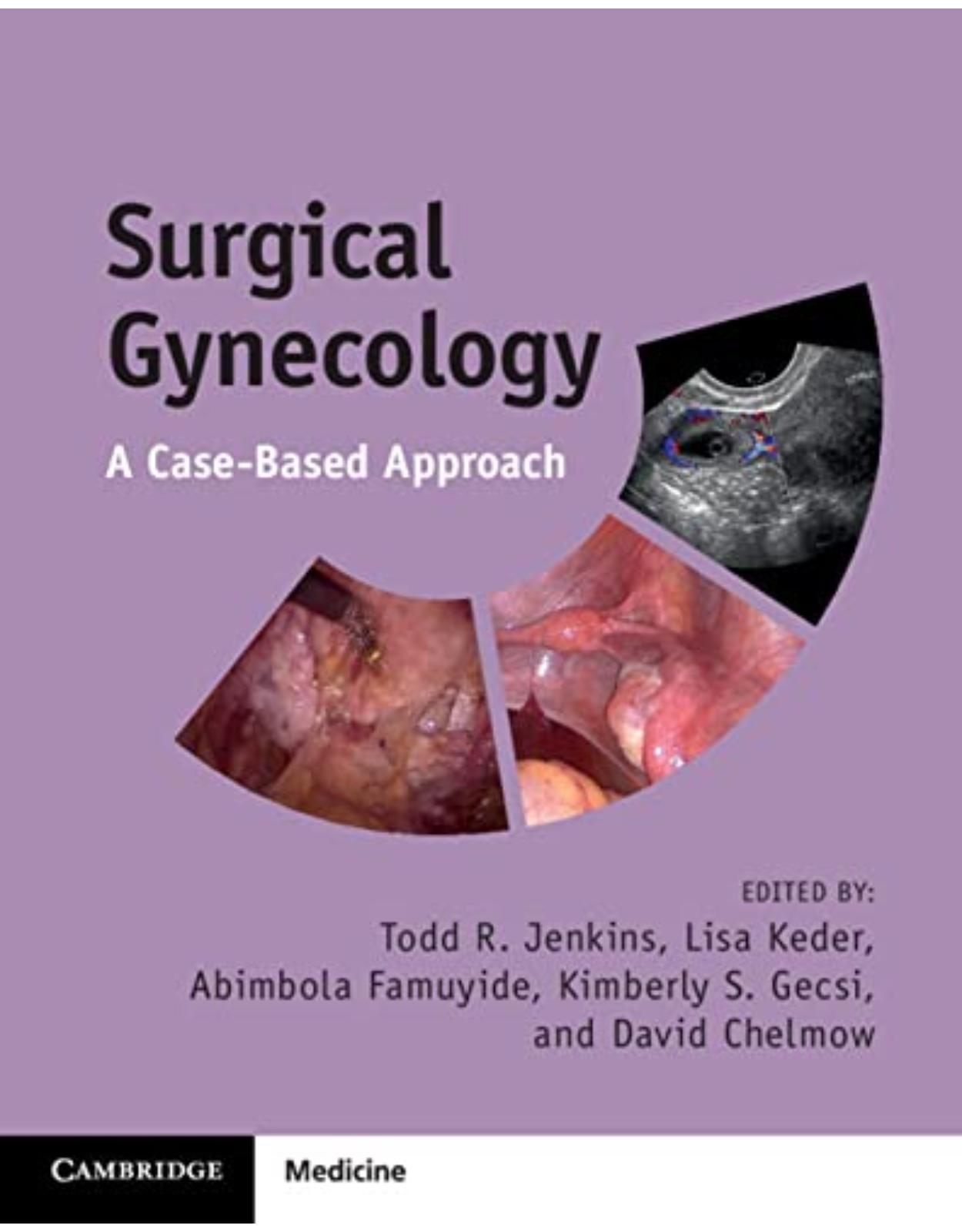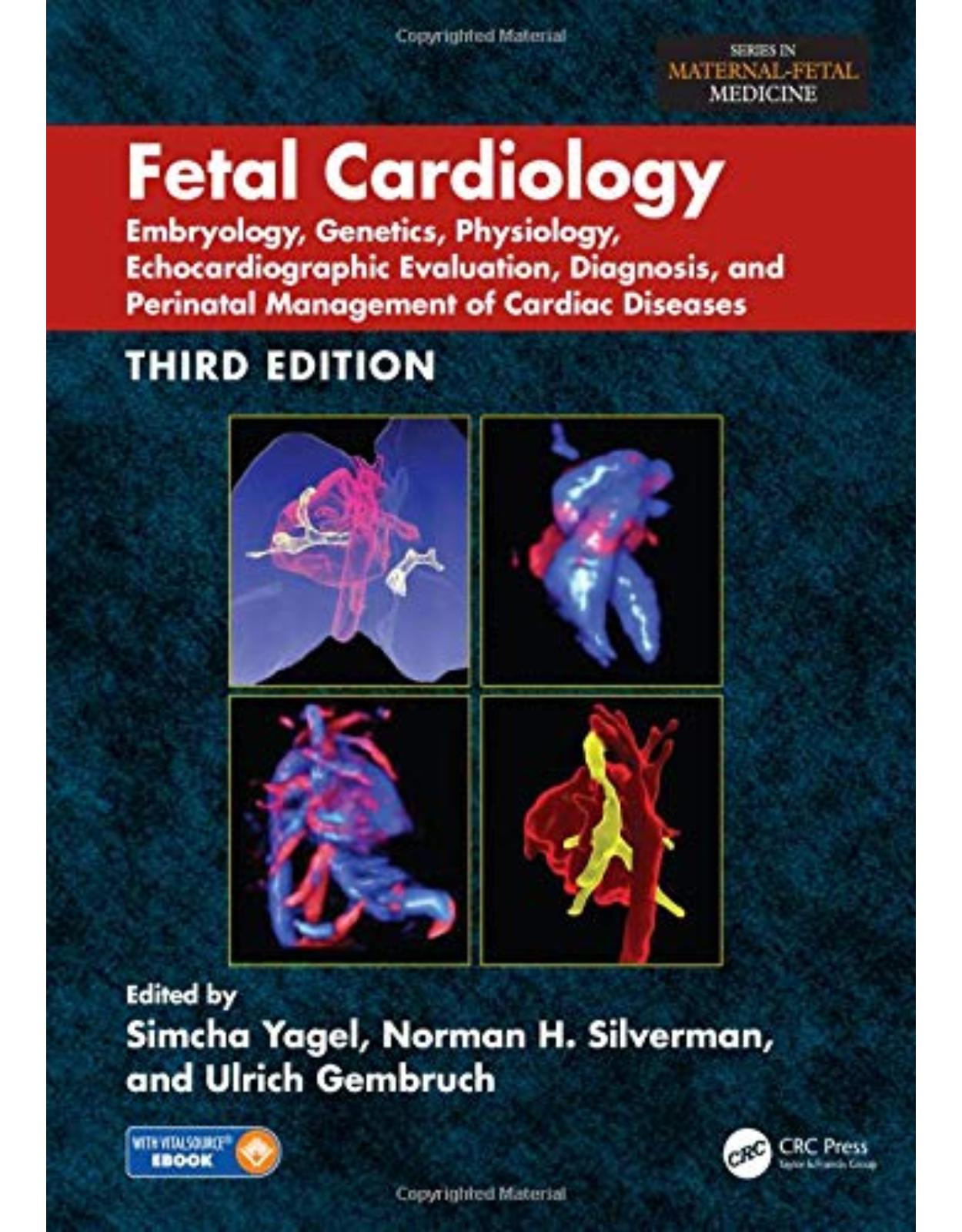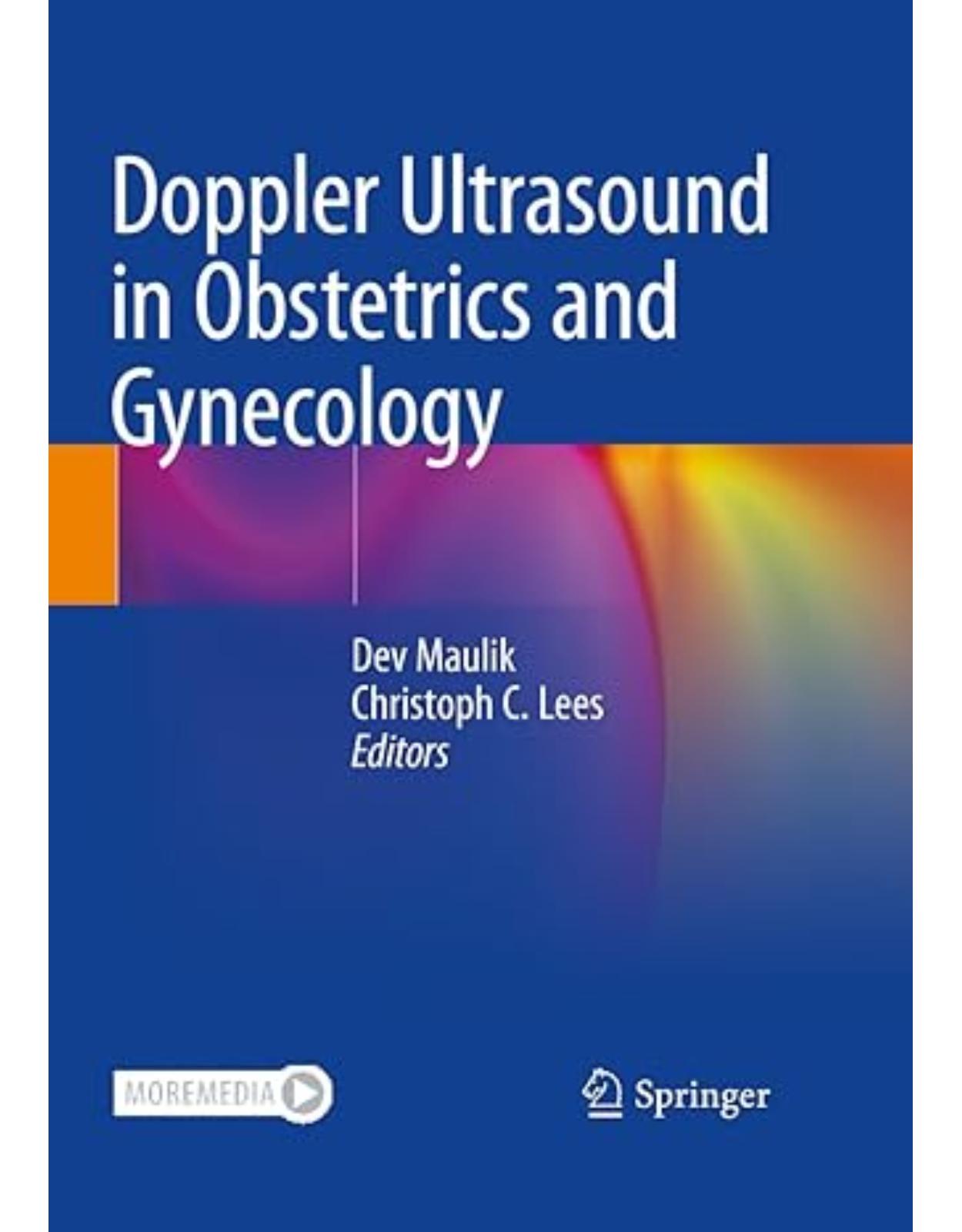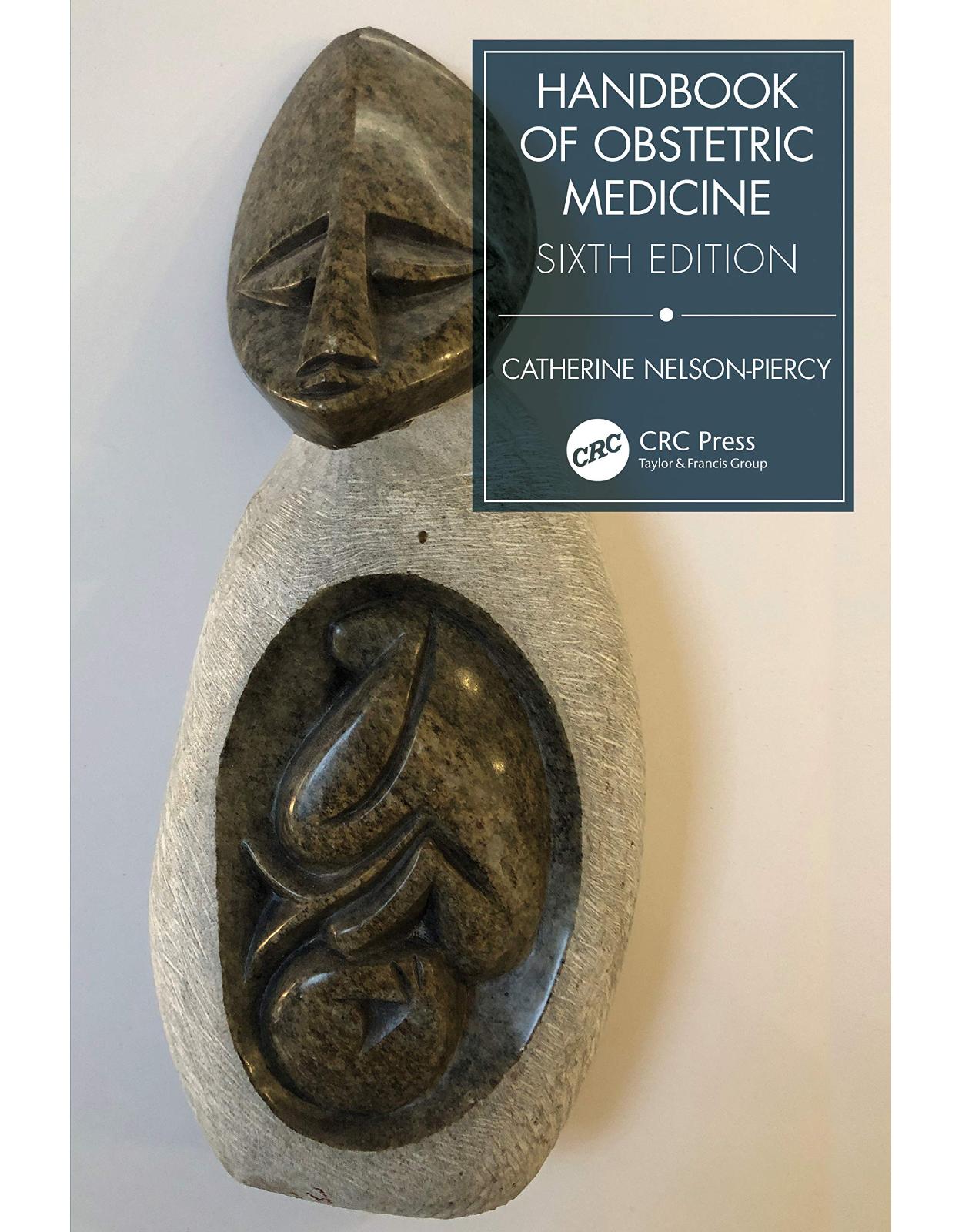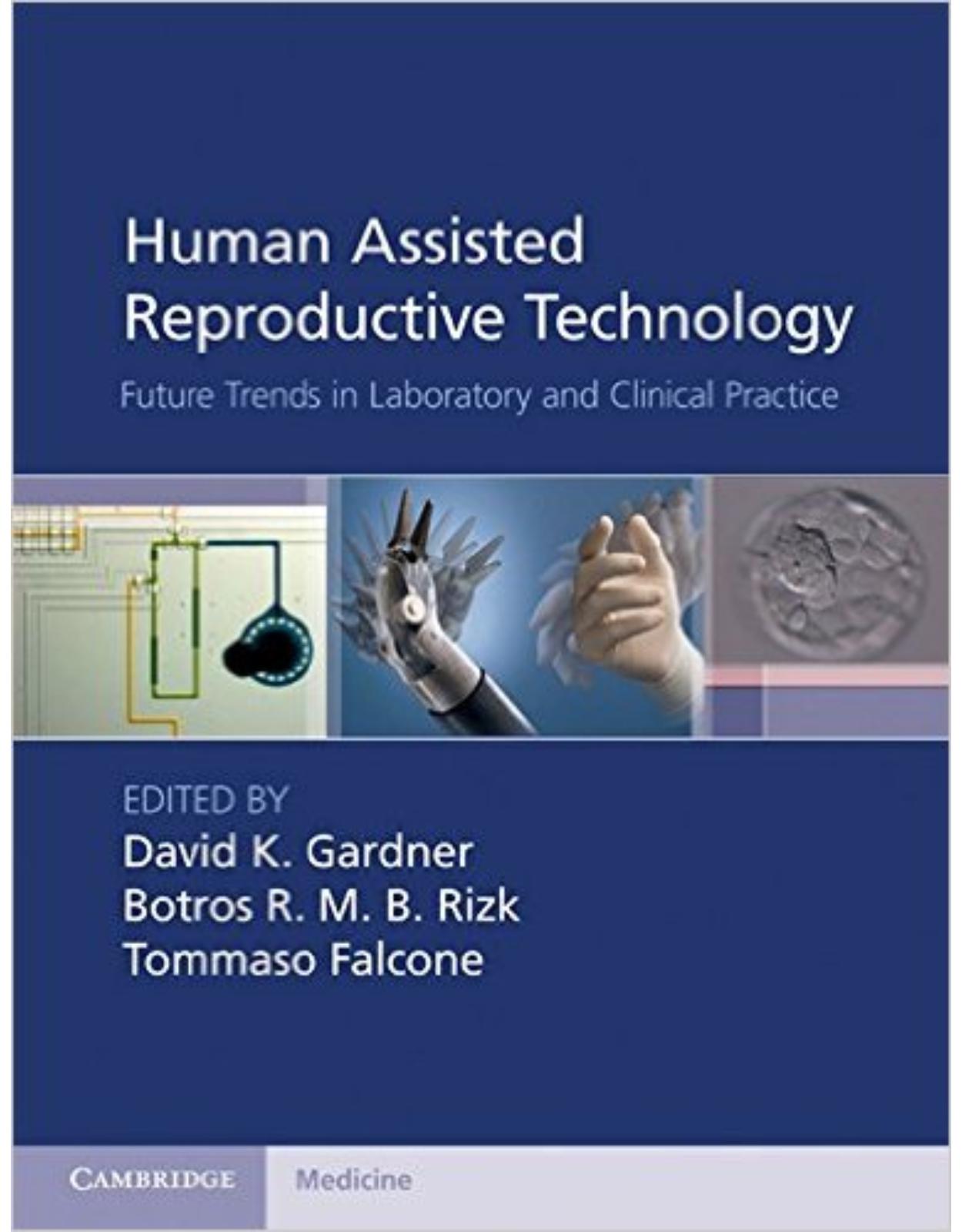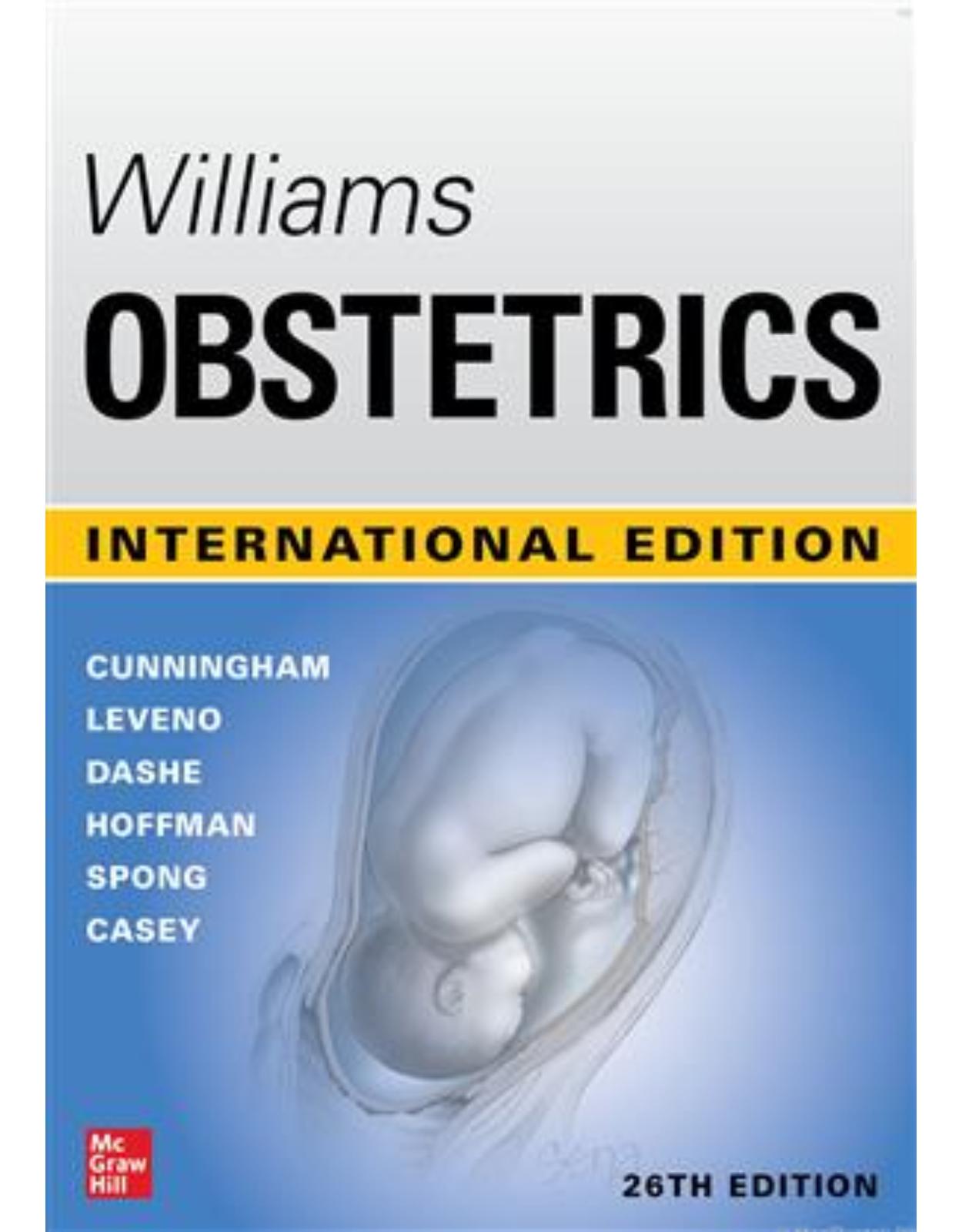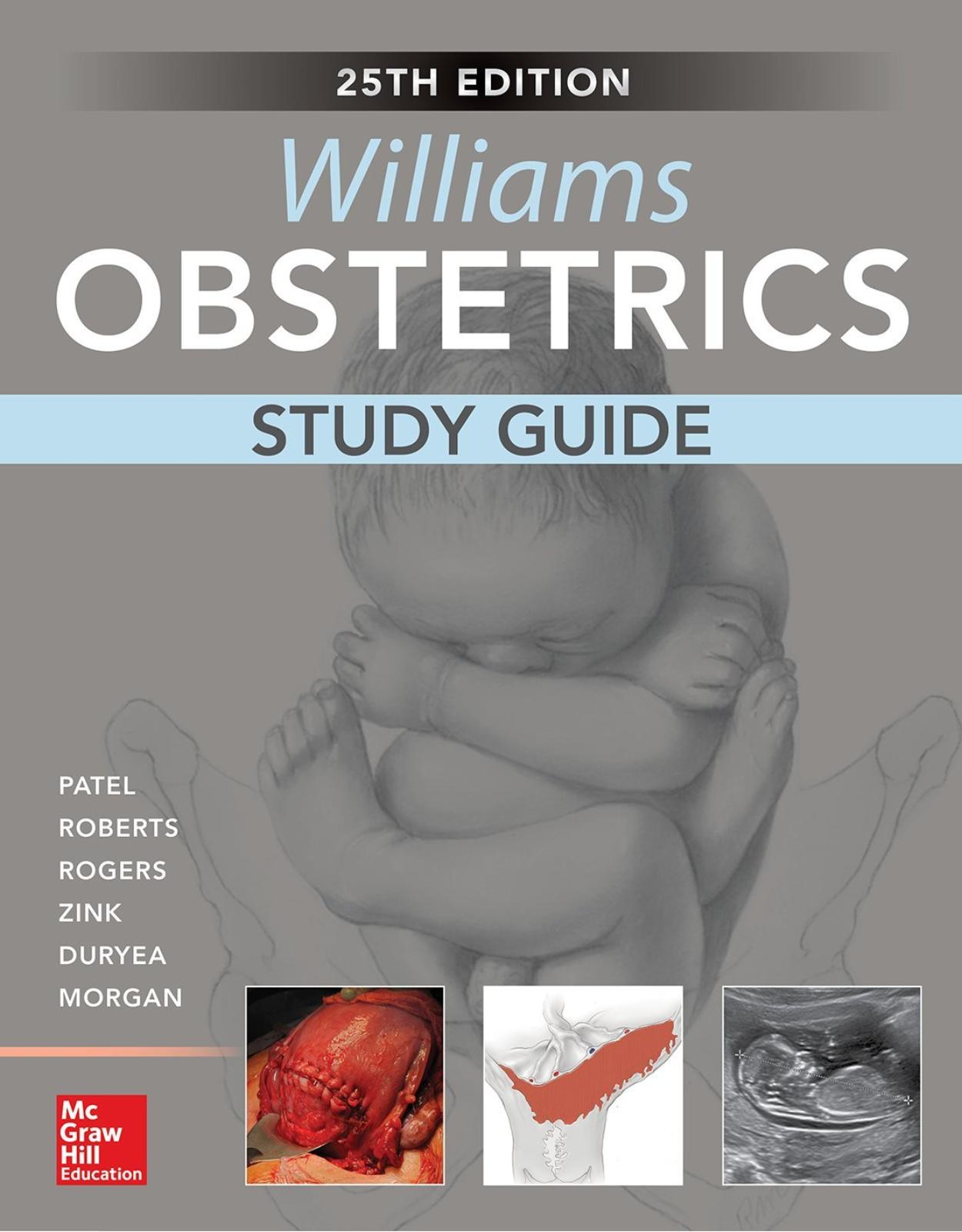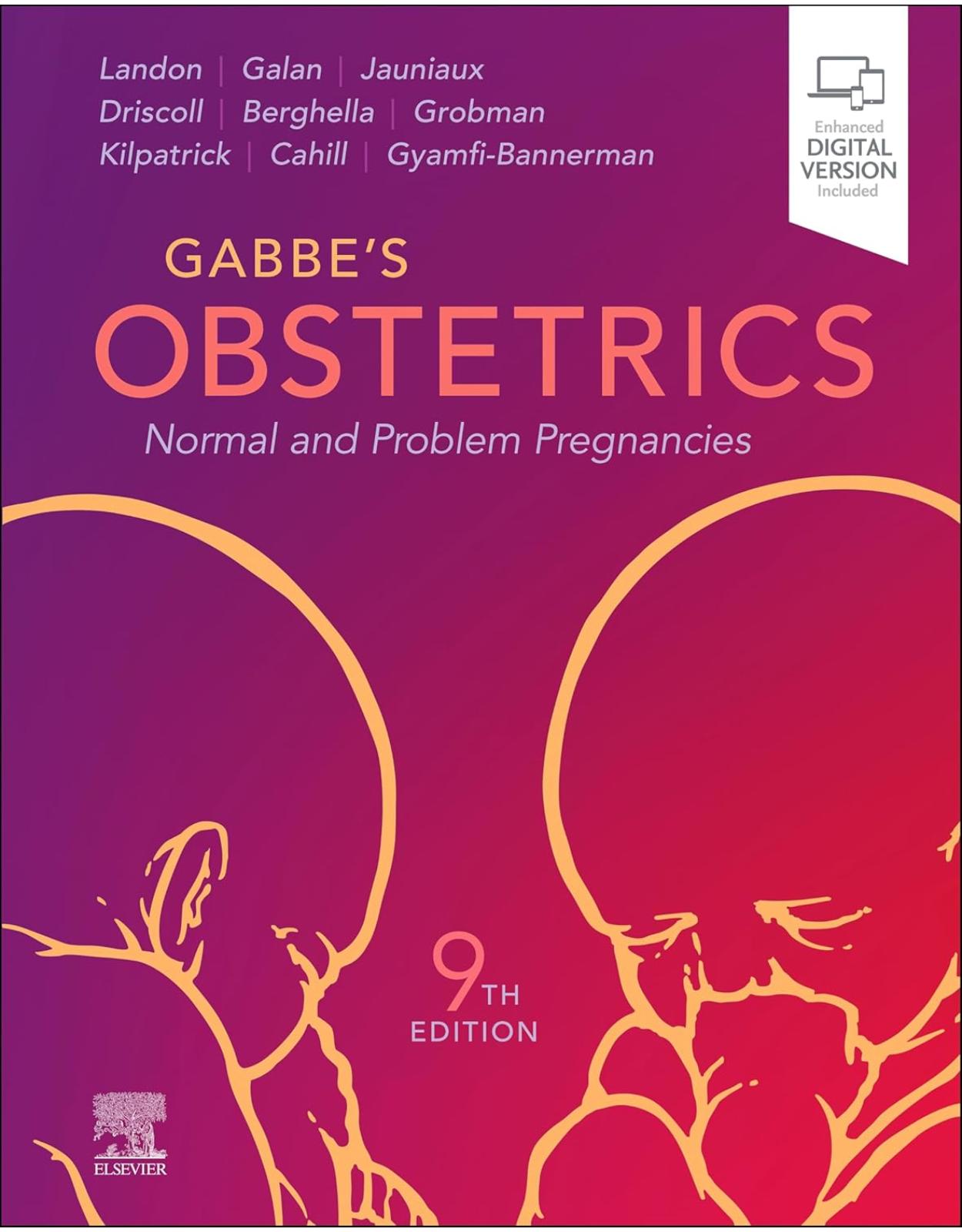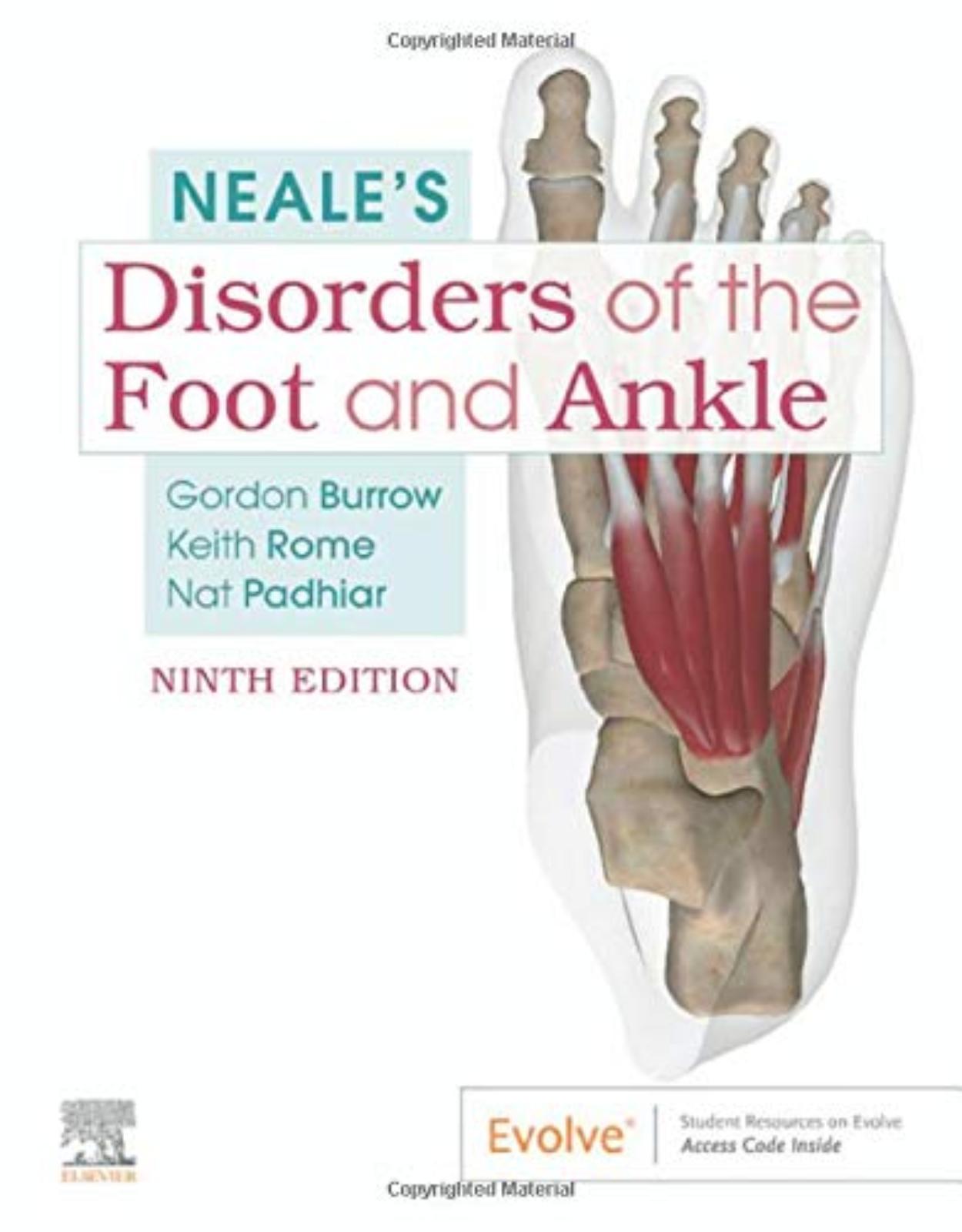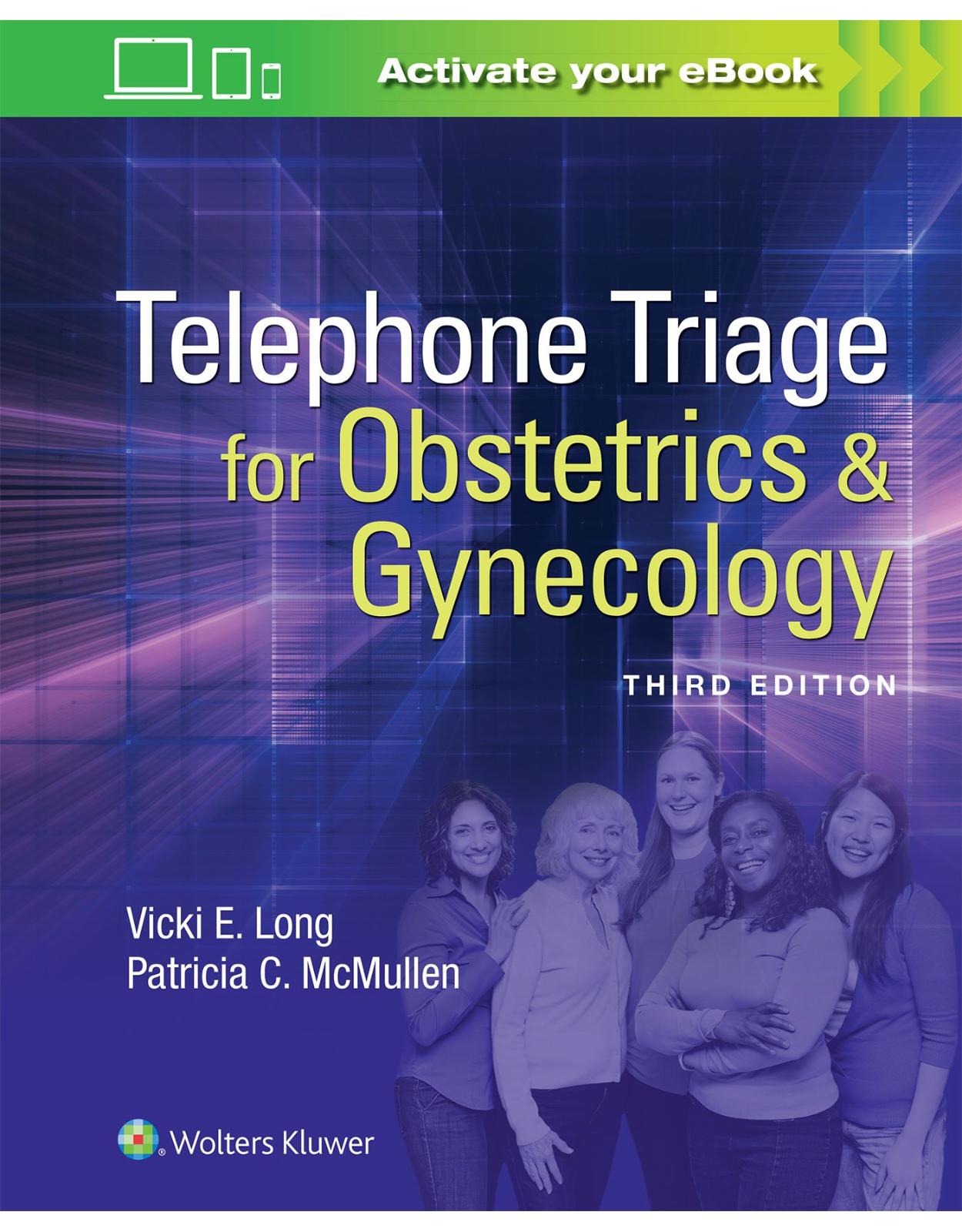
Telephone Triage for Obstetrics & Gynecology
Livrare gratis la comenzi peste 500 RON. Pentru celelalte comenzi livrarea este 20 RON.
Disponibilitate: La comanda in aproximativ 4 saptamani
Editura: LWW
Limba: Engleza
Nr. pagini: 448
Coperta: Paperback
Dimensiuni: 18.03 x 2.29 x 23.11 cm
An aparitie: 27 April 2018
Description:
Provide top-level obstetrics and gynecology telephone triage that is safe, efficient, and effective, with Telephone Triage for Obstetrics & Gynecology, 3rd Edition. This at-your-fingertips guide offers a wide range of current, evidence-based protocols, backed by proven patient-questioning techniques, quick-reference charts, and real-life patient scenarios. Adaptable to private practice, hospital, clinic, or call center, this invaluable guide will help ensure that your telephone triage standards stay high, while your practice serves individual patient situations with empathy and accuracy, right from the start. Be expertly guided through the telephone triage rigors of data-gathering, protocols, and patient education, with these vital features: NEW chapter on incorporating internet research into advice on specific protoc NEW and expanded protocols that offer updated content on preconceptual screening, infectious disease impacts on pregnancy, infertility management, and emergency contraception Quick-reference sections that arrange protocols alphabetically for fast locating Easy-to-follow, data-gathering, flowchart format that helps you quickly determine the nature and urgency of the caller’s problem, and choose the appropriate intervention Easy-to-explain patient-education sections after each protocol Basic Triage Assessment Forms that address specific problems and require vital patient data Guidance on developing “telephone charisma” and the power of sympathetic listening Effective patient questioning techniques—pertinent questions to ask, types of questions, time management, getting clarification Real-life call scenarios that point out problems with not listening fully to the patient, skipping relevant questions, or exerting judgments Covers telephone triage basics, including logistical and legal considerations, assessments, telephone communication basics and challenges, and more Offers obstetric protocols, including overviews of preconceptual and infertility, early management of unintended pregnancy, fetal prenatal screening, early pregnancy evaluation and surveillance, and more Offers gynecologic protocols, including overviews of abnormal bleeding and spotting, amenorrhea, barrier contraceptives, breast complaints, emergency contraception, injectable contraceptives, intrauterine contraception, menopausal concerns, and more Vital guidance for all gynecologic nurses, obstetric nurses, certified nurse midwives, OB/GYN nurse practitioners, all triage nurses, and health professionals at call centers
Table of Contents:
Part I: Telephone Triage Basics
Chapter 1: Telephone Triage in Women’s Health Care: Logistical and Legal Considerations
THE ORIGIN AND EVOLUTION OF TRIAGE
BASIC CONSIDERATIONS IN ESTABLISHING A TELEPHONE TRIAGE SYSTEM
Are “Protocols” or “Guidelines” the Appropriate Format?
What’s the First Step in Drafting Protocols or Guidelines?
Who Should Handle the Calls?
How Should Calls Be Documented?
A WORD ON CONFIDENTIALITY, THE HEALTH INSURANCE PORTABILITY AND ACCOUNTABILITY ACT, AND THE AMERICAN RECOVERY AND REINVESTMENT ACT
What Information Is Pertinent for Each Patient Who Calls?
HANDLING OUT-OF-STATE CALLS
REDUCING LEGAL RISKS/IMPROVING PATIENT CARE
Chapter 2: Assessing the Obstetric/Gynecologic Patient by Telephone
THE EVIDENCE FOR ASSESSMENT BY TELEPHONE
THE BASIC DATA
THE NATURE OF THE PROBLEM
THE REAL NATURE OF THE PROBLEM
EXPLORING SYMPTOMS
TIME MANAGEMENT IN TELEPHONE TRIAGE
Chapter 3: Communication Basics and Challenges in Telephone Triage
HELPFUL THERAPEUTIC COMMUNICATION TECHNIQUES
COMMUNICATION BASICS IN TELEPHONE TRIAGE
Self-Awareness
Tele Charisma
Paralanguage
Establish Trust
Use an Empathetic Approach
Allow Enough Time
Judicious Use of Open-ended Questions
Significance of Closing
COMMON CHALLENGES IN TELEPHONE TRIAGE
Maintaining Composure
Giving Bad News
Providing Comfort
Communicating with Assertiveness
Care for the Caregiver
RESOURCES IN COMMUNITY
Chapter 4: The Use of Online Information Retrieval in Telephone Triage: Professional Resources and Social Media
IMPORTANT TERMS
WEB PAGE ORGANIZATION AND NAVIGATION
INTERNET SEARCH ENGINES
CHOOSING KEYWORDS
Table 4-1: Internet Search Tracking Form
ENTERING KEYWORDS
Table 4-2: Examples of Keywords, Operators, and Results From Internet Searches
RESULTS DISPLAY
Table 4-3: Results From Keyword Search High Risk Pregnancy
EVALUATING WEB PAGE CONTENT
PATIENTS, CAREGIVERS, AND THE INTERNET
SCHOLARLY SEARCH ENGINES/DATABASES
A WORD ON SOCIAL MEDIA
MEDICAL PROFESSIONAL EDUCATION
Patient Education
POTENTIAL BARRIERS AND CAUTIONS
PROPER USE OF THE INTERNET AND SOCIAL MEDIA
Part II: Obstetric Protocols
Chapter 5: Preconceptual and Infertility Overview
BASIC TRIAGE ASSESSMENT FORM FOR PREGNANCY
BASIC TRIAGE ASSESSMENT FORM FOR AN OBSTETRIC PATIENT’S EXPOSURE TO ENVIRONMENTAL AND HOUSEHOLD CHEMICALS
BASIC TRIAGE ASSESSMENT FORM FOR AN OBSTETRIC PATIENT’S EXPOSURE TO COMMUNICABLE DISEASES
Table 5-1: Exposure to Selected Communicable Diseases in Pregnancy
Table 5-2: Recommendations for Vaccine Use in Pregnant Women
Cleaning Agents
Key Questions
Actions
STEP A: Use of Cleaning Agents
Cord Blood Banking
Key Questions
Actions
STEP A: Definition of Cord Blood Banking
STEP B: Arranging for Cord Blood Banking
STEP C: Controversies Surrounding Cord Blood Banking
Patient Education
Food Safety in Pregnancy
Key Questions
Actions
STEP A: Basic Rules of Food Safety
STEP B: Food Safety Advice for Consuming Fish
STEP C: Food Safety Advice for Selected Dairy Products
STEP D: Food Safety Advice for Deli Meats, etc.
STEP E: Safety Advice for Avoiding Toxoplasmosis Exposure
Patient Education
Hair Dye and Permanent Wave Exposure
Key Questions
Actions
STEP A: Hair Dye or Permanent Wave
Medication Use During Preconception, Pregnancy, and Lactation
Table 5-3: Risk Categories for Medications Prescribed in Preconception, Pregnancy, and Lactation
Key Questions
Actions
STEP A: Current Medication Use
Paint Exposure
Key Questions
Actions
STEP A: Latex Paints
STEP B: Spray Paints
STEP C: Oil- or Lead-Based Paints
STEP D: Sealants and Shellacs
STEP E: Artists’ Paints
Patient Education
Pesticide Use
Key Questions
Actions
STEP A: Pesticide Use
Common 30-Day Female Infertility Workup for Women With 28- to 30-Day Cycles
Table 5-4: Commonly Used Infertility Medications
Key Questions
Actions
STEP A: Getting Started
STEP B: Menses After Completion of the Infertility Workup
STEP C: No Menses After Completion of the Infertility Workup
Patient Education
Chapter 6: Early Management of Unintended Pregnancy Overview
BASIC TRIAGE ASSESSMENT FORM FOR EARLY UNINTENDED PREGNANCY
Counseling Options for Early Unintended Pregnancy
Key Questions
Actions
STEP A: Discussing Options for Unintended Pregnancy
STEP B: Referral to a Counselor or Other Care Provider
Patient Education
Chapter 7: Prenatal Screening Overview and Tests for Ongoing Fetal Surveillance
PRENATAL SCREENING OVERVIEW
TESTS FOR ONGOING FETAL SURVEILLANCE
Early Prenatal Genetic Screening for Aneuploidy (Abnormal Chromosomes)
Key Questions
Actions
STEP A: Chorionic Villus Sampling and Amniocentesis
STEP B: First Trimester Combined Screening, Serum Integrated Screening, and the Quadruple Second Trimester Screen
Patient Education
Early Prenatal Screening for Carrier Status
Key Questions
Actions
STEP A: Desires Carrier Screening
STEP B: Positive Screening Test
Patient Education
Antepartum Fetal Surveillance by Biophysical Profile
Key Questions
Actions
STEP A: Indications for a Biophysical Profile
STEP B: What a Biophysical Profile Involves
STEP C: Understanding Biophysical Profile Results
Patient Education
Antepartum Fetal Surveillance by Contraction Stress Test
Key Questions
Actions
STEP A: Indications for a Contraction Stress Test
STEP B: What a Contraction Stress Test Involves
STEP C: Understanding Contraction Stress Test Results
Patient Education
Antepartum Fetal Surveillance by Fetal Movement (Kick) Counts
Key Questions
Actions
STEP A: Indications for Counting Fetal Movements
STEP B: What Counting Fetal Movement (Kicks) Involves
STEP C: Understanding Fetal Movement (Kick) Count Results
Patient Education
Antepartum Fetal Surveillance by Nonstress Test
Key Questions
Actions
STEP A: Indications for a Nonstress Test
STEP B: What a Nonstress Test Involves
STEP C: Understanding Nonstress Test Results
Patient Education
Chapter 8: 1st Trimester Overview
Table 8-1: Maternal Mental Health: Perinatal Depression and Anxiety Patient Safety Bundle From the Council on Patient Safety in Women’s Health Care
1st Trimester Abdominal Pain
Key Questions
Actions
STEP A: Vaginal Bleeding
STEP B: Severe Abdominal Pain
STEP C: Problems to Consider
Patient Education
1st Trimester Ambivalence Regarding Pregnancy
Key Questions
Actions
STEP A: Ambivalence in Pregnancy
STEP B: Possible Underlying Depression or Anxiety
STEP C: History of Depression or Other Mental Health Disorders
STEP D: Desire to Harm Oneself or Others
Patient Education
1st Trimester Anxiety
Key Questions
Actions
STEP A: Ambivalence in Pregnancy
STEP B: Possible Underlying Depression or Anxiety
STEP C: History of Depression or Mental Health Disorders
STEP D: Recognition and Treatment of a Panic Attack
STEP E: Desire to Harm Oneself or Others
Patient Education
1st Trimester Bleeding
Key Questions
Actions
STEP A: Pregnancy Confirmation
STEP B: Vaginal Bleeding, Heavy
STEP C: Vaginal Spotting or Irregular Bleeding
STEP D: Ectopic Pregnancy Considerations
STEP E: Spontaneous Abortion Considerations
Patient Education
1st Trimester Constipation
Key Questions
Actions
STEP A: Pregnancy Related
STEP B: Constipation With Additional Symptoms
STEP C: History of Constipation/Medication Possibly Contributing
STEP D: Blood in Stool
Patient Education
1st Trimester Depression
Key Questions
Actions
STEP A: Ambivalence in Pregnancy
STEP B: Possible Underlying Depression or Anxiety
STEP C: History of Depression or Mental Health Disorder
STEP D: Desire to Harm Oneself or Others
Patient Education
1st Trimester Dizziness/Fainting
Key Questions
Actions
STEP A: Sudden, Severe Headache, or Neurologic Changes
STEP B: Fainting, Loss of Consciousness
STEP C: Ear Pain or Sinus Pressure
STEP D: Syncope
Patient Education
1st Trimester Fatigue
Key Questions
Actions
STEP A: Pregnancy-Related Fatigue
STEP B: Preexisting Illnesses
STEP C: Outside Stressors
Patient Education
1st Trimester Headache
Key Questions
Actions
STEP A: Sudden, Severe Headache
STEP B: Neurologic Symptoms
STEP C: Respiratory Symptoms
STEP D: Dull Headaches
Patient Education
1st Trimester Nausea/Vomiting
Key Questions
Actions
STEP A: Food/Fluid Difficulties
STEP B: Nausea/Vomiting in Pregnancy
STEP C: Preexisting Food Intolerance or Gastrointestinal Problem
STEP D: Fever/Abdominal Pain
Patient Education
1st Trimester Urinary Complaints
Key Questions
Actions
STEP A: Frequent Urination Without Other Symptoms
STEP B: Frequent Urination With Urinary Symptoms
STEP C: Frequent Urination With Renal Symptoms
STEP D: Sickle Cell Disease or Sickle Cell Carrier
Patient Education
1st Trimester Vaginal Discharge
Key Questions
Actions
STEP A: Physiologic Discharge of Pregnancy
STEP B: Symptoms of Vaginitis
STEP C: Urinary Tract Symptoms
STEP D: Possible Sexually Transmitted Infection Exposure
STEP E: Vulvovaginitis Symptoms With Possible Lesions
STEP F: History of Herpetic Lesions
STEP G: Vulvovaginitis Symptoms, Etiology Unknown
Patient Education
Chapter 9: 2nd Trimester Overview
2nd Trimester Abdominal Pain
Key Questions
Actions
STEP A: Vaginal Bleeding Associated With Abdominal Pain
STEP B: Symptoms Consistent With Contractions
STEP C: Pain Confined to One Part of Abdomen, Relieved by Position Change
STEP D: Pain Confined to One Part of Abdomen, Not Relieved by Position Change
STEP E: Pain Associated With Other Symptoms
Patient Education
Monitoring for Contractions
Gastritis
2nd Trimester Anxiety/Depression
Key Questions
Actions
STEP A: Anxiety in Pregnancy/Assessment and Treatment of Panic Attacks
STEP B: Possible Underlying Depression or Anxiety
STEP C: History of Depression or Previous Mental Health Issues
STEP D: Desire to Harm Oneself or Others
Patient Education
2nd Trimester Backache
Key Questions
Actions
STEP A: Preexisting Back Condition
STEP B: Backache Accompanied by Possible Contractions
STEP C: Backache Confined to One Part of Back, Relieved by Position Change
STEP D: Backache Confined, Unrelieved by Position Change
STEP E: Backache Associated With Other Symptoms
Patient Education
2nd Trimester Bleeding
Key Questions
Actions
STEP A: Abdominal Pain Associated With Vaginal Bleeding
STEP B: Painless Vaginal Bleeding
STEP C: Vaginal Spotting Associated With Pain, Itching, or Odor
STEP D: Other Possibilities
Patient Education
2nd Trimester Constipation
Key Questions
Actions
STEP A: Pregnancy Related
STEP B: Constipation With Additional Symptoms
STEP C: History of Constipation
STEP D: Blood in Stool
Patient Education
2nd Trimester Decreased Fetal Movement
Key Questions
Actions
STEP A: Felt Fetal Movement in Last 24 Hours
STEP B: Has Felt Fetal Movement Every Day for a Week
STEP C: Inconsistent Fetal Movement
STEP D: Prior Pregnancy Loss
Patient Education
2nd Trimester Fatigue
Key Questions
Actions
STEP A: Pregnancy-Related Fatigue
STEP B: Preexisting Illnesses
STEP C: Outside Stressors
2nd Trimester Headache
Key Questions
Actions
STEP A: Sudden, Severe Headache
STEP B: Neurologic Symptoms
STEP C: Respiratory Symptoms
STEP D: Dull Headaches
2nd Trimester Indigestion
Key Questions
Actions
STEP A: Onset Pregnancy Related
STEP B: Indigestion With Additional Symptoms
STEP C: History of Indigestion
Patient Education
2nd Trimester Nasal Congestion
Key Questions
Actions
STEP A: Colored Nasal Congestion
STEP B: Clear Nasal Congestion
Patient Education
2nd Trimester Nausea/Vomiting
Key Questions
Actions
STEP A: Acute Inability to Retain Food or Liquids
STEP B: Pregnancy-Related Symptoms
STEP C: Possible Preterm Labor Symptoms
STEP D: Preexisting Conditions
STEP E: Possible Flu or Abdominal Problem
Patient Education
2nd Trimester Pelvic Pain/Pressure
Key Questions
Actions
STEP A: Symptoms Consistent With Contractions
STEP B: Nonrhythmic Pelvic Pressure
STEP C: Vaginal Bleeding Associated With Pelvic Pain and Pressure
STEP D: Pressure Confined to One Part of Pelvis
STEP E: Pain Confined to One Part of Abdomen, Not Relieved by Position Change
Patient Education
2nd Trimester Swelling (Edema)
Key Questions
Actions
STEP A: Swelling With Other Symptoms
STEP B: Facial and Upper Extremity Swelling
STEP C: Uncomplicated Edema (Swelling)
Patient Education
2nd Trimester Urinary Complaints
Key Questions
Actions
STEP A: Frequent Urination Without Other Symptoms
STEP B: Frequent Urination With Pelvic Symptoms
STEP C: Frequent Urination With Renal Symptoms
STEP D: Sickle Cell Disease or Sickle Cell Carrier
2nd Trimester Vaginal Discharge
Key Questions
Actions
STEP A: Physiologic Discharge of Pregnancy
STEP B: Symptoms of Vaginitis
STEP C: Urinary Tract Symptoms
STEP D: Possible Sexually Transmitted Infection Exposure
STEP E: Vulvovaginitis Symptoms With Possible Lesions
STEP F: History of Herpetic Lesions
STEP G: Vulvovaginitis Symptoms, Etiology Unknown
Patient Education
2nd Trimester Visual Changes
Key Questions
Actions
STEP A: Sudden Loss of Vision
STEP B: Eye Pain
STEP C: Unilateral, Intense, Sudden Eye Pain
STEP D: Gradual Eye Changes
Chapter 10: 3rd Trimester Overview
3rd Trimester Abdominal Pain
Key Questions
Actions
STEP A: Symptoms Consistent With Contractions
STEP B: Vaginal Bleeding Associated With Abdominal Pain
STEP C: Pain Confined to One Part of Abdomen, Relieved by Position Change
STEP D: Pain Confined to One Part of Abdomen, Not Relieved by Position Change
STEP E: Pain Associated With Other Symptoms
Patient Education
3rd Trimester Anxiety and/or Depression
Key Questions
Actions
STEP A: Anxiety in Late Pregnancy/Recognition and Treatment of Panic Attack
STEP B: Possible Underlying Depression or Anxiety
STEP C: History of Depression or Mental Disorder
STEP D: Desire to Harm Oneself or Others
Patient Education
3rd Trimester Backache
Key Questions
Actions
STEP A: Backache Accompanied by Possible Contractions
STEP B: Preexisting Back Condition
STEP C: Backache Confined to One Part of Back, Relieved by Position Change
STEP D: Backache Confined, Unrelieved by Position Change
STEP E: Backache Associated With Other Symptoms
Patient Education
3rd Trimester Bleeding
Key Questions
Actions
STEP A: Painless Vaginal Bleeding
STEP B: Abdominal Pain Associated With Vaginal Bleeding
STEP C: Vaginal Bleeding Associated With Pain, Itching, or Odor
Patient Education
3rd Trimester Constipation
Key Questions
Actions
STEP A: Pregnancy Related/Possibly Medication Induced
STEP B: Constipation With Additional Symptoms
STEP C: History of Constipation
STEP D: Blood in Stool
Patient Education
3rd Trimester Decreased Fetal Movement
Key Questions
Actions
STEP A: Has Felt Fetal Movement Within the Last 24 Hours
STEP B: No Fetal Movement in 24 Hours
Patient Education
3rd Trimester Headache
Key Questions
Actions
STEP A: Recent Diagnosis Involving Blood Pressure Elevation
STEP B: Sudden, Severe Headache
STEP C: Neurologic Symptoms
STEP D: Respiratory Symptoms
STEP E: Dull Headaches
3rd Trimester Indigestion
Key Questions
Actions
STEP A: Pregnancy-Related Onset
STEP B: Indigestion With Additional Symptoms
STEP C: History of Indigestion
Patient Education
3rd Trimester Inverted Nipples
Key Questions
Actions
STEP A: New-Onset Inverted Nipple
STEP B: Inverted Nipples From 34 Weeks to Term
STEP C: Inverted Nipples Before 34 Weeks
Patient Education
3rd Trimester Nausea/Vomiting
Key Questions
Actions
STEP A: Acute Inability to Retain Food or Liquids
STEP B: Symptoms Accompanying Possible Contractions
STEP C: Pregnancy-Related Symptoms
STEP D: Preexisting Conditions
STEP E: Possible Flu or Acute Abdominal Problem
Patient Education
3rd Trimester Pelvic Pain/Pressure
Key Questions
Actions
STEP A: Symptoms Consistent With Contractions
STEP B: Nonrhythmic Pelvic Pressure
STEP C: Vaginal Bleeding Associated With Pelvic Pain and Pressure
STEP D: Pressure Confined to One Part of Pelvis
Patient Education
3rd Trimester Precipitous Delivery
Key Questions
Actions
STEP A: Intense Pressure or Viewing the Presenting Part
STEP B: Visible Head or Presenting Part
STEP C: After the Delivery
3rd Trimester Recognizing Labor
Key Questions
Actions
STEP A: Multiparous Women
STEP B: Early Symptoms of Preterm Labor
STEP C: Labor in Term Pregnancy
3rd Trimester Ruptured Membranes
Key Questions
Actions
STEP A: Ruptured Membranes
STEP B: Amniotic Fluid
STEP C: Prolonged Rupture of Membranes
STEP D: Contractions
3rd Trimester Swelling (Edema)
Key Questions
Actions
STEP A: Swelling With Other Symptoms
STEP B: Facial and Upper Extremity Swelling
STEP C: Lower Extremity Swelling
Patient Education
3rd Trimester Urinary Complaints
Key Questions
Actions
STEP A: Frequent Urination Without Other Symptoms
STEP B: Frequent Urination With Pelvic Symptoms
STEP C: Frequent Urination With Renal Symptoms
STEP D: Sickle Cell Disease or Sickle Cell Carrier
3rd Trimester Vaginal Discharge
Key Questions
Actions
STEP A: Physiologic Discharge of Pregnancy
STEP B: Symptoms of Vaginitis
STEP C: Urinary Tract Symptoms
STEP D: Possible Sexually Transmitted Infection Exposure
STEP E: Vulvovaginitis Symptoms With Possible Lesions
STEP F: History of Herpetic Lesions
STEP G: Vulvovaginitis Symptoms, Etiology Unknown
Patient Education
3rd Trimester Visual Changes
Key Questions
Actions
STEP A: Sudden Loss of Vision
STEP B: Eye Pain
STEP C: Unilateral, Intense, Sudden Eye Pain
STEP D: Gradual Eye Changes
Chapter 11: Postpartum and Neonatal Overview
BASIC TRIAGE ASSESSMENT FORM FOR THE POSTPARTUM PERIOD
Common Questions After Delivery
Key Questions
Actions
STEP A: Activity Immediately After a Cesarean Section (C-Section)
STEP B: Activity Immediately After a Vaginal Delivery
STEP C: Exercise After Birth
STEP D: Sexual Intercourse
STEP E: Contraception
Patient Education
Postpartum Baby Blues/Depression/Psychosis
Key Questions
Actions
STEP A: Treatment of Postpartum Blues
STEP B: Requires Immediate Action and Referral to a Mental Health Professional
STEP C: Requires Prompt Action and Referral to a Mental Health Professional
Patient Education
IMPORTANT REFERENCES
Postpartum Breast Pain
Key Questions
Actions
STEP A: Mastitis (Breast Infection)
STEP B: Postpartum Breast Pain in Nonbreastfeeding Women
STEP C: Plugged Ducts
STEP D: Postpartum Breast Pain in Breastfeeding Women
Patient Education
Postpartum Sore or Inverted Nipples
Key Questions
Actions
STEP A: Sore Nipples
STEP B: Inverted Nipples
Postpartum Hemorrhoids
Key Questions
Actions
STEP A: New Onset of Rectal Bleeding or Pain
STEP B: Treatment of Hemorrhoids
Patient Education
Postpartum Incision Care for a Cesarean Section
Key Questions
Actions
STEP A: Assessment of an Infected Incision
STEP B: Care of the Cesarean Section Incision
STEP C: Refer Immediately Any Patient With Symptoms of an Infected Cesarean Section Incision
Postpartum Incision Care for an Episiotomy (or Perineal Tear)
Key Questions
Actions
STEP A: Assessment of an Infected Incision or Perineal Tear
STEP B: Care of the Episiotomy Incision or Perineal Tear
STEP C: Refer Any Patient With Symptoms of an Infected Episiotomy/Perineal Tear for a Same-Day Appointment
Postpartum Vaginal Bleeding (Lochia)
Key Questions
Actions
STEP A: Make a Same-Day Appointment if the Patient Has
STEP B: Postpartum Bleeding
Newborn Bottle-Feeding
Key Questions
Actions
STEP A: Amount and Frequency of Bottle-Feedings
STEP B: Assessment of Elimination
STEP C: Assessment of Vomiting
STEP D: When to Schedule an Appointment
Patient Education
Newborn Breastfeeding
Key Questions
Actions
STEP A: Amount and Frequency of Breastfeeding
STEP B: Assessment of Elimination
STEP C: Assessment of Vomiting
STEP D: When to Schedule an Appointment
Patient Education
Newborn Fussy Baby/Colic
Key Questions
Actions
STEP A: Colic
STEP B: Fussiness Caused by an Illness
STEP C: Treatment of Colic
STEP D: Urgent Treatments
Patient Education
Safe Sleeping (Back to Sleep)
Key Questions
Actions
STEP A: Safe Sleeping Position for Infant Sleep
STEP B: Bed Sharing
STEP C: Crib Considerations
STEP D: Sleeping Arrangements
Patient Education
Part III: Gynecologic Protocols
Chapter 12: Abnormal Bleeding and Spotting Overview
BASIC TRIAGE ASSESSMENT FORM FOR ABNORMAL BLEEDING
Table 12-1: Facts on Normal Menstruation
Abnormal Bleeding in Adolescents
Key Questions
Actions
STEP A: First Menses
STEP B: Heavy Bleeding
STEP C: Bleeding in Adolescents
STEP D: Bleeding and Sexually Active
Patient Education
Abnormal Bleeding in Women of Reproductive Age
Key Questions
Actions
STEP A: Heavy Bleeding
STEP B: Potentially Pregnant
STEP C: Using Hormones, Systemic Hormonal Contraceptives
STEP D: Timing for Evaluation
STEP E: Barrier Methods
STEP F: Sexually Transmitted Infection Risk
Patient Education
Abnormal Bleeding/Spotting in Perimenopausal Women
Key Questions
Actions
STEP A: Serious Bleeding
STEP B: Questionable Pregnancy
STEP C: Hormone Use
STEP D: Low Pregnancy Risk
STEP E: Barrier Methods
STEP F: Not Using Barrier Methods
Patient Education
Abnormal Bleeding/Spotting in Postmenopausal Women
Key Questions
Actions
STEP A: Patients Who Have Had a Hysterectomy
STEP B: Heavy Bleeding
STEP C: Women With a Uterus
Patient Education
Chapter 13: Amenorrhea Overview
BASIC TRIAGE ASSESSMENT FORM FOR AMENORRHEA
Secondary Amenorrhea
Key Questions
Actions
STEP A: Pregnancy and Risk Status
STEP B: Patients Who Are Not Pregnant
Patient Education
Chapter 14: Barrier Contraceptives Overview
BASIC TRIAGE ASSESSMENT FORM FOR BARRIER CONTRACEPTIVE METHODS
Allergy to Latex
Key Questions
Actions
STEP A: Using a Latex-Based Contraceptive
STEP B: Wheezing or Shortness of Breath
STEP C: Symptoms of Vaginitis
Broken Female Condom
Key Questions
Actions
STEP A: Broken Female Condom Before/After Intercourse
STEP B: Broken Condom During Intercourse
STEP C: Sexually Transmitted Infections
Patient Education
Broken Male Condom
Key Questions
Actions
STEP A: Broken Condom Before/After Intercourse
STEP B: Broken Condom During Intercourse
STEP C: Sexually Transmitted Infections
Patient Education
Trapped Diaphragm, Female or Male Condom
Key Questions
Actions
STEP A: How to Remove a Trapped Diaphragm
Patient Education
Chapter 15: Breast Complaints Overview
Table 15-1: Common Presentation of Various Breast Nodules
BASIC TRIAGE ASSESSMENT FORM FOR BREAST COMPLAINTS
Breast Discharge
Key Questions
Actions
STEP A: Milky Discharge
STEP B: Unilateral Discharge
STEP C: Bloody or Discolored Discharge
STEP D: Discharge With Breast Stimulation
Breast Lump
Key Questions
Actions
STEP A: Postmenopausal Woman With Breast Lump
STEP B: Presumed Postovulation Lump
STEP C: Presumed Preovulatory Lump
STEP D: Associated Pain
STEP E: Hormonal Medications and Breast Lumps
STEP F: Mammogram Timing
Patient Education
Breast Pain
Key Questions
Actions
STEP A: Taking Hormones
STEP B: Excluding Pregnancy
STEP C: Cyclic Breast Pain
STEP D: Breast Tenderness or Pain
Patient Education
Mammography Preparation
Key Questions
Actions
STEP A: Definition of Mammography
STEP B: How to Prepare for a Mammogram
STEP C: Treatment of Pain With Breast Compression
Patient Education
Procedure Involved for a Mammogram
Chapter 16: Emergency Contraception
BASIC TRIAGE ASSESSMENT FORM FOR EMERGENCY CONTRACEPTION
Emergency Contraception with Dedicated Products or Oral Contraceptives
Table 16-1: Emergency Contraception With Dedicated Products or Oral Contraceptives Available in the United States
Key Questions
Actions
STEP A: Unprotected Intercourse Within 120 Hours
STEP B: More than 120 Hours Since Unprotected Intercourse
Patient Education
Emergency Contraception With a Copper Intrauterine Device
Key Questions
Actions
STEP A: Unprotected Intercourse Within 5 Days
STEP B: More Than 5 Days Since Unprotected Intercourse
Patient Education
Chapter 17: Nexplanon Overview
BASIC TRIAGE ASSESSMENT FORM FOR NEXPLANON
Amenorrhea With Implanon
Key Questions
Actions
STEP A: Determine if Pregnant and Assess 1st Trimester Risk Status
STEP B: For Patients Who Are Not Pregnant
Patient Education
Bleeding/Spotting With Nexplanon
Key Questions
Actions
STEP A: Provide General Information About Appropriate Screening
STEP B: Patient Has Used Nexplanon for More than 3 Years
STEP C: Nexplanon Cannot Be Felt
STEP D: Patient Is at Risk for Sexually Transmitted Infection Exposure
Patient Education
Chapter 18: Injectable Contraceptives Overview
BASIC TRIAGE ASSESSMENT FORM FOR INJECTABLE CONTRACEPTIVES
Amenorrhea With Depo-Provera Use
Key Questions
Actions
STEP A: Pregnancy Possible
STEP B: Pregnancy Unlikely
Patient Education
Bleeding and Depo-Provera Use
Actions
STEP A: First 3 Months of Depo-Provera Use
STEP B: Irregular but Not Excessive Bleeding/Spotting
STEP C: Patient Is Sexually Active
STEP D: Pregnancy Is a Possibility
STEP E: Prior Abnormal Pap Smear Result
Patient Education
Depression and Depo-Provera Use
Key Questions
Actions
STEP A: Depression That Begins With Depo-Provera Use
STEP B: Preexisting Depression
STEP C: Depression History and Medication Use
STEP D: Suicidal Thoughts or Actions
Patient Education
Late for Depo-Provera Injection
Key Questions
Actions
STEP A: Within Depo-Provera Time Limits
STEP B: No Unprotected Intercourse
STEP C: Excluding Pregnancy
STEP D: Potential Pregnancy
STEP E: Reinstitution of Depo-Provera Therapy
Patient Education
Pain or Redness at the Depo-Provera Injection Site
Key Questions
Actions
STEP A: Depo-Provera Injection Within Last 12 Hours
STEP B: Depo-Provera Injection More Than 12 Hours Ago
STEP C: Recurrence of Pain or Redness at Site
Patient Education
Weight Gain and Depo-Provera Use
Key Questions
Actions
STEP A: Gradual Weight Gain Since Depo-Provera Initiation
STEP B: Preexisting Weight Concerns
STEP C: Sudden Gain of 5 or More Pounds
Patient Education
Chapter 19: Intrauterine Contraception Overview
BASIC TRIAGE ASSESSMENT FORM FOR INTRAUTERINE CONTRACEPTION
Abdominal Pain/Cramping and Intrauterine Contraception
Key Questions
Actions
STEP A: Recent Insertion of Intrauterine Device/Intrauterine System
STEP B: First Menses After Insertion
STEP C: Severe Pain
STEPS D and E: Mild to Moderate Pain, Possible Sexually Transmitted Infection, Possible Pregnancy
Patient Education
Amenorrhea With Intrauterine Contraception
Key Questions
Actions
STEP A: Abnormal Menses
STEP B: Pregnancy Unlikely, Pain Present
STEP C: Pregnancy Unlikely, No Pain Present
Patient Education
Bleeding Irregularities and Intrauterine Contraception
Key Questions
Actions
STEP A: Recent Insertion
STEP B: First Menses After Insertion
STEP C: Irregular Bleeding, Spotting, Not Excessive
STEP D: Patient’s Symptoms Not Characterized by Previous Steps
STEP E: Patient Is Sexually Active
Patient Education
Lost String and Intrauterine Contraception
Key Questions
Actions
STEP A: Patient Has Never Felt String
STEP B: Recent Insertion
STEP C: First Menses After Insertion
STEP D: String Not Felt After Last Menstrual Period
STEP E: Change in String Length at Last Check
STEP F: String Appropriately Felt After LMP
Patient Education
Chapter 20: Menopausal Concerns and Hormone Therapy Overview
BASIC TRIAGE ASSESSMENT FORM FOR HORMONE THERAPY
Abdominal Pain and Hormone Therapy
Key Questions
Actions
STEP A: Severe Pain
STEP B: Mild/Moderate Pain
STEP C: Nausea, Vomiting, Diarrhea, or Fever
Patient Education
Acne and Hormone Therapy
Key Questions
Actions
STEP A: Recent Start of Menopausal Hormone Therapy
STEP B: Change in Skin Care Practices
STEP C: Facial Redness
STEP D: Butterfly Pattern
STEP E: ABCD Lesion
Patient Education
Amenorrhea, Abnormal Bleeding, and Adjustment to Menopausal Hormone Therapy
Key Questions
Actions
STEP A: Bleeding After Hysterectomy
STEP B: Abnormal Bleeding
STEP C: Continuous Combined Hormone Replacement Therapy
STEP D: Cyclic Therapy
Patient Education
Bleeding/Spotting and Menopausal Hormone Therapy
Key Questions
Actions
STEP A: Hysterectomy
STEP B: No Hysterectomy
STEP C: Cyclic Therapy
STEP D: Continuous Dose Hormone Therapy
STEP E: Other Forms of Hormones
Patient Education
Bone Health
Key Questions
Actions
STEP A: Promoting Bone Health
STEP B: Bone Density Testing (DEXA)
Breast Pain and Hormone Therapy
Key Questions
Actions
STEP A: Bilateral Breast Pain
STEP B: Unilateral Breast Pain
STEP C: Recent Menopausal Hormone Therapy Start
STEP D: Hormone Replacement Therapy Restart or Dosage Change
Patient Education
Chest Pain and Hormone Therapy
Key Questions
Actions
STEP A: Severe Pain
STEP B: Pain During Activity
STEP C: Respiratory Symptoms
STEP D: Gradual Onset and Pain With Inspiration
STEP E: Point-Specific Pain
STEP F: Pain Associated With Meals
Patient Education
Depression and Menopausal Hormone Therapy
Key Questions
Actions
STEP A: Depression on Initiation or Hormone Replacement Therapy
STEP B: Preexisting Depression
STEP C: Depression History, Medication Use
STEP D: Suicidal Thoughts or Actions
Patient Education
Dyspareunia—Basic Care and Nonhormonal Treatments
Key Questions
Actions
STEP A: Initial Evaluation of Dyspareunia and Presenting Symptoms
STEP B: Recognition of Systemic Allergic Response
STEP C: General Advice With Topical Nonhormonal Treatments
Patient Education
Dyspareunia—Estrogen Therapies
Key Questions
Actions
STEP A: General Vaginal Estrogen Therapy Information
STEP B: Vaginal Estrogen Cream
STEP C: Low-Dose Vaginal Estrogen Ring
STEP D: Vaginal Estrogen Suppository
STEP E: Selective Estrogen Receptor Modulators
Dyspareunia—Low-Frequency CO2 Laser Therapy
BASIC TRIAGE ASSESSMENT FORM PRIOR TO LOW-FREQUENCY CO2 LASER THERAPY
Key Questions
Actions
STEP A: Pain
STEP B: Prolonged Pain
STEP C: Nausea, Vomiting, Diarrhea, or Fever
STEP D: Mechanism of Action and Expected Outcome
Patient Education
Eye and Visual Changes and Hormone Therapy
Key Questions
Actions
STEP A: Severe Symptoms
STEP B: Eye Pain
STEP C: Red Eye
STEP D: Gradual Change in Vision
Gastrointestinal Complaints: Nausea/Vomiting and Hormone Therapy
Key Questions
Actions
STEP A: Unprotected Intercourse
STEP B: Colored Emesis
STEP C: Gastrointestinal Symptoms With Food
STEP D: Nausea, Vomiting, and Diarrhea
STEP E: Nausea Associated With Menopausal Hormone Therapy Dosing
Patient Education
Hair Growth or Loss and Hormone Therapy
Key Questions
Actions
STEP A: Hair Loss
STEP B: Excess Hair
STEP C: Taking a Testosterone Preparation
Patient Education
Headache and Hormone Therapy
Key Questions
Actions
STEP A: Severe Headache
STEP B: Visual Changes
STEP C: Neck Stiffness
STEP D: Respiratory Tract Symptoms
Hot Flashes/Sweats and Hormone Therapy
Key Questions
Actions
STEP A: Recent Hysterectomy
STEP B: Recent Change in Hormone Replacement Therapy
STEP C: Environmental Change
Patient Education
Leg Cramps and Hormone Therapy
Key Questions
Actions
STEP A: Immobility, Unilateral Pain
STEP B: Pain Increases With Walking and Is Relieved by Rest
STEP C: Nighttime Pain
STEP D: Charley Horse
Decreased Libido and Hormone Therapy
Key Questions
Actions
STEP A: Decreased Libido Associated With Start of Hormone Replacement Therapy
STEP B: Depressed Mood
STEP C: Dyspareunia
Patient Education
Missed or Late Pills, Patch, or Topicals, and Hormone Therapy
Key Questions
Actions
STEP A: Patients Who Have Had a Hysterectomy
STEP B: Missed Estrogen Dose(s)
STEP C: Missed Progesterone Tablet(s)
STEP D: Missed Combined Hormone Therapy
Patient Education
Weight Gain and Hormone Therapy
Key Questions
Actions
STEP A: Foot, Ankle, or Leg Swelling or Shortness of Breath
STEP B: Rapid Weight Gain Not Accompanied by Other Symptoms
STEP C: Potential Pregnancy
STEP D: Changes in Diet or Activity
STEP E: Continued Weight Gain
Patient Education
Chapter 21: Natural Family Planning (Fertility Awareness) Overview
Natural Family Planning (Fertility Awareness) to Achieve or Avoid a Pregnancy
Key Questions
Actions
STEP A: Avoidance of Pregnancy
STEP B: Achieving a Pregnancy
Chapter 22: Pelvic Complaints Overview
Abnormal Cervical Pap Smear
Key Questions
Actions
STEP A: Unsatisfactory Smear
STEP B: Epithelial Cell Abnormalities
STEP C: ASCUS Pap Smear
STEP D: ASCUS, Negative HPV
STEP E: ASCUS/Positive HPV, LGSIL, or Higher
STEP F: AGCUS Pap Smear
STEP G: Other Comments on Pap Smear
Patient Education
Colposcopy
Key Questions
Actions
STEP A: Colposcopy for Diagnosis of Cervical Dysplasia
STEP B: Vulvar Colposcopy
Patient Education
Conization (Cold Knife Conization, Loop Electrosurgical Excision Procedure; Large Loop Excision of the Transformation Zone)
Key Questions
Actions
STEP A: Provide General Information About the Conization Procedure
STEP B: Post Conization
Patient Education
Cryosurgery
Key Questions
Actions
STEP A: Vaginal Discharge
STEP B: Fever
STEP C: Bleeding
STEP D: Vaginal Odor
Patient Education
Endometrial Ablation
Key Questions
Actions
STEP A: Overview of Endometrial Ablation
STEP B: Preparing for an Endometrial Ablation
STEP C: What to Expect Following an Endometrial Ablation
Endometrial Biopsy (EMB)
Key Questions
Actions
STEP A: Provide General Information About the EMB Procedure
STEP B: EMB for Postmenopausal Bleeding (Intact Uterus)
STEP C: EMB for Abnormal Pap Smear
STEP D: EMB for Abnormal Uterine Bleeding in a Premenopausal Woman
Patient Education
Laparoscopy
Key Questions
Actions
STEP A: Abdominal Soreness
STEP B: Neck or Shoulder Pain
STEP C: Fever
STEP D: Bleeding
STEP E: Incision
Patient Education
Lost Pessary
Key Questions
Actions
STEP A: How to Reinsert a Pessary
STEP B: How to Manage an Embedded Pessary
Patient Education
Pelvic Pain
Key Questions
Actions
STEP A: Pelvic Pain, Vaginal Bleeding, and Pregnancy Possible
STEP B: Pelvic Pain, Possible Exposure to Sexually Transmitted Infection
STEP C: Pelvic Pain With Blood in the Urine and/or Back Pain
STEP D: Pelvic Pain, History of Abdominal Surgeries, Possible Adhesions
Patient Education
Trapped Tampon
Key Questions
Actions
STEP A: How to Manage a Lost Tampon
STEP B: Suspected Infection
Urinary Tract Infection Symptoms
Key Questions
Actions
STEP A: Symptoms Accompanied by Back Pain, Nausea, or Fever
STEP B: Vulvar Burning With Urination
STEP C: Urinary Tract Infection Symptoms Not Complicated by Nausea, Back Pain, Fever, or Vulvar Burning
Patient Education
Vaginal Discharge With Pessary
Key Questions
Actions
STEP A: Change in Discharge
STEP B: What to Do if Having Symptoms
Patient Education
Vulvovaginitis With Lesions
Key Questions
Actions
STEP A: Lesions Present
STEP B: Recurrent Lesions
STEP C: Possible Exposure to a Sexually Transmitted Infection
Patient Education
Vulvovaginitis Without Lesions
Table 22-1: Common Presentation and Important Facts Regarding Sexually Transmitted Infections
Key Questions
Actions
STEP A: Vulvovaginitis Symptoms With Dysuria
STEP B: Possible Exposure to a Sexually Transmitted Infection
STEP C: Frequent Douching
STEP D: Possible Foreign Body
STEP E: Vulvovaginitis Symptoms, Etiology Unknown
Patient Education
Chapter 23: Systemic Hormonal Contraception Overview: Combined Oral Contraceptive Pills, NuvaRing, Ortho Evra, and Progesterone-Only Pills
BASIC TRIAGE ASSESSMENT FORM FOR SYSTEMIC HORMONAL CONTRACEPTIVES
Abdominal Pain and Systemic Hormonal Contraceptives
Key Questions
Actions
STEP A: Severe Pain
STEP B: Prolonged Pain
STEP C: Nausea, Vomiting, Diarrhea, or Fever
Patient Education
Acne and Systemic Hormonal Contraceptives
Key Questions
Actions
STEP A: Recent Skin Care Changes
STEP B: Change in Facial or Body Hair
STEP C: Skin Lesions
STEP D: Associated Symptoms
STEP E: Papules or Pustules (Pimples)
Patient Education
Amenorrhea and Systemic Hormonal Contraceptives
Key Questions
Actions
STEP A: Amenorrhea
STEP B: Method Started Within the Past 3 Months
STEP C: Progesterone-Only Pills
STEP D: Missed Pills, Delayed Patch Change, or “Misplaced” or Delayed Ring
STEP E: New Medication
Patient Education
Breakthrough Bleeding/Spotting and Systemic Hormonal Contraceptives
Key Questions
Actions
STEP A: Spotting While Taking Progesterone-Only Pills
STEP B: Spotting or Breakthrough Bleeding in the First 3 Months of Systemic Hormonal Contraceptive Use
STEP C: Missed Oral Contraceptive Pills, Patch Adherence Problems, or Delayed Patch or Ring Use
STEP D: Sexually Active and Not Using a Backup Contraceptive Method
STEP E: Other Possible Causes of Spotting and Breakthrough Bleeding
Patient Education
Breakthrough Bleeding/Spotting and Continuous Dosing With Systemic Hormonal Contraceptives
Key Questions
Actions
STEP A: Bleeding Problems With Monophasic Oral Contraceptives Used Continuously
STEP B: Bleeding Problems With Triphasic Oral Contraceptives Used Continuously
STEP C: Bleeding Problems With NuvaRing Used Continuously
STEP D: Bleeding Problems With Ortho Evra Used Continuously
Patient Education
Breast Pain and Systemic Hormonal Contraceptives
Key Questions
Actions
STEP A: Bilateral Breast Pain
STEP B: Unilateral Breast Pain
STEP C: Recent Pill Start
STEP D: Possible Pregnancy
Patient Education
Chest Pain and Systemic Hormonal Contraceptives
Key Questions
Actions
STEP A: Severe Pain
STEP B: Chest Pain With Activity
STEP C: Shortness of Breath/Anxiety
STEP D: Gradual Chest Pain With Inspiration
STEP E: Point-Specific Pain With Movement
STEP F: Indigestion or Burning After Meals
Patient Education
Continuous-Dose Systemic Hormonal Contraceptives
Key Questions
Actions
STEP A: Taking Monophasic Oral Contraceptive Pills Continuously
STEP B: Taking Triphasic Oral Contraceptive Pills Continuously
STEP C: Using NuvaRing Continuously
STEP D: Using Ortho Evra (the Patch) Continuously
Patient Education
Depression and Systemic Hormonal Contraceptives
Key Questions
Actions
STEP A: Depression on Initiation of Systemic Hormonal Contraceptives
STEP B: Preexisting Depression
STEP C: Depression History and Medication Use
STEP D: Suicidal Thoughts or Actions
Patient Education
Eye and Visual Changes and Systemic Hormonal Contraceptives
Key Questions
Actions
STEP A: Sudden Loss of Vision
STEP B: Eye Pain
STEP C: Eye Redness
STEP D: Gradual Change of Vision
Gastrointestinal Complaints: Nausea/Vomiting and Systemic Hormonal Contraceptives
Key Questions
Actions
STEP A: At Risk for Pregnancy
STEP B: Nausea or Vomiting Related to Method Initiation
STEP C: Symptoms Associated With Eating
STEP D: Nausea/Vomiting Accompanied by Mild to Moderate Abdominal Pain and/or Diarrhea
Patient Education
Hair Growth or Loss and Systemic Hormonal Contraceptives
Key Questions
Actions
STEP A: Hair Change Associated With Hormone Use
STEP B: Hair Loss
STEP C: Excess Hair
Headaches and Systemic Hormonal Contraceptives
Key Questions
Actions
STEP A: Severe Headache (Worst She’s Ever Had)
STEP B: Visual Changes
STEP C: Neck Stiffness
STEP D: Congestion, Fever, and Cough
STEP E: Cyclic Headaches Related to Systemic Hormonal Contraceptive Use
STEP F: More Frequent Debilitating Headaches With Systemic Hormonal Contraceptive Use
Patient Education
Leg Cramps/Pain and Systemic Hormonal Contraceptives
Key Questions
Actions
STEP A: Exclude Possible Deep Vein Thrombosis
STEP B: Problem Occurs at Bedtime
STEP C: Charley Horse
Patient Education
Libido Decrease and Systemic Hormonal Contraceptives
Key Questions
Actions
STEP A: Libido Decrease With Oral Contraceptive Use
STEP B: Associated Depression
STEP C: Decreased Libido and Painful Intercourse
Late or Missed Combined Oral Contraceptive Pills
PROBLEMS UNIQUE TO COMBINED ORAL CONTRACEPTIVE PILLS
Key Questions
Actions
STEP A: Missed Pills in Week 1 or 2
STEP B: Completely Missed Pills During Week 3
STEP C: Missing Any of the Seven Placebo Pills
Patient Education
“Lost” NuvaRing
PROBLEMS UNIQUE TO NUVARING
Key Questions
Actions
STEP A: NuvaRing Out for Less Than 3 Hours
STEP B: NuvaRing Out More Than 3 Hours
Patient Education
Insertion/Removal Problems With NuvaRing
Key Questions
Actions
STEP A: Trouble Inserting the NuvaRing
STEP B: Trouble Removing the NuvaRing
Patient Education
Adhesive Issues With Ortho Evra
PROBLEMS UNIQUE TO ORTHO EVRA (THE PATCH)
Key Questions
Actions
STEP A: Less Than 48 Hours Since Patch Has Had Trouble Adhering
STEP B: Unprotected Intercourse and More Than 48 Hours After or Uncertain When Patch Started to Have Trouble Adhering
STEP C: More Than 48 Hours After or Uncertain When Patch Started to Have Trouble Adhering
Patient Education
Dosing Schedule and Progesterone-Only Contraceptives
PROBLEMS UNIQUE TO PROGESTERONE-ONLY ORAL CONTRACEPTIVE PILLS (POPs)
Key Questions
Actions
STEP A: Improper Dosing Schedule With Progesterone-Only Pills
Quick Start Method and Systemic Hormonal Contraceptives
Key Questions
Actions
STEP A: Suspected Pregnancy
STEP B: Starting Systemic Hormonal Contraception With the Quick Start Method
STEP C: Starting Systemic Hormonal Contraceptive Methods With the Day-1-Start or Sunday-Start Method
Patient Education
Weight Gain and Systemic Hormonal Contraceptives
Key Questions
Actions
STEP A: Foot, Ankle, or Leg Swelling or Shortness of Breath
STEP B: Rapid Weight Gain Not Accompanied by Other Symptoms
STEP C: Potential Pregnancy
STEP D: Changes in Diet or Activity
STEP E: Weight Gain Despite Increased Activity and Stable or Lower Caloric Intake
Patient Education
Part IV: Other Women’s Health Protocols
Chapter 24: Overview of Other Women’s Health Issues
Anxiety
Key Questions
Actions
STEP A: Recognition of a Panic Attack
STEP B: Treatment for Anxiety
Patient Education
Depression (Depressive Disorders)
Key Questions
Actions
STEP A: Refer to Mental Health Counselor
STEP B: Treatment for Depression
Patient Education
Domestic Violence (Intimate Partner Violence)
Key Questions
Actions
STEP A: Immediate Concern for Harm
STEP B: Abuse History
STEP C: Safety Plan
Safety Plan
Elevated Cholesterol (Elevated Lipids and/or Triglycerides)
Key Questions
Actions
STEP A: Provide General Information About Appropriate Screening
STEP B: Refer Patient to Source of Care for Evaluation
Patient Education
Hypertension (Elevated Blood Pressure)
Key Questions
Actions
STEP A: Provide Reassurance and Education
STEP B: Refer Patient to Source of Care for Follow-Up Evaluation
STEP C: Refer for Immediate Evaluation and Treatment
Patient Education
Smoking Cessation
Key Questions
Actions
STEP A: General Education and Referral
STEP B: Encouragement
Patient Education
Substance Misuse Disorders
Key Questions
Actions
STEP A: Initial Substance Misuse
STEP B: General Education and Referral
Patient Education
Appendix A: Important Community Resources
Index
| An aparitie | 27 April 2018 |
| Autor | Dr. Vicki Long, Patricia McMullen |
| Dimensiuni | 18.03 x 2.29 x 23.11 cm |
| Editura | LWW |
| Format | Paperback |
| ISBN | 9781496362414 |
| Limba | Engleza |
| Nr pag | 448 |

